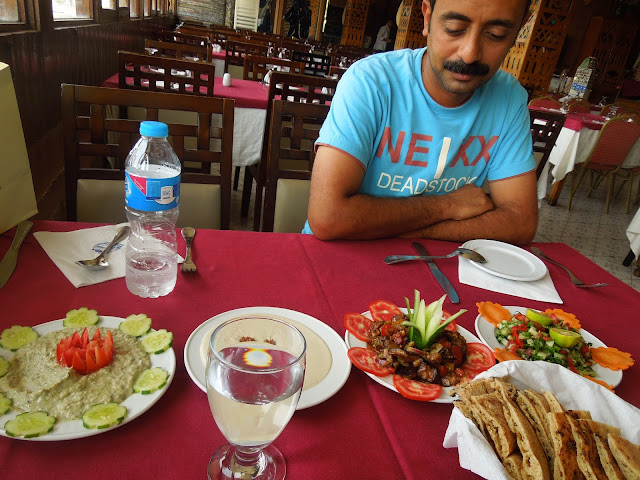Discovering Egypt--Aswan and Luxor
Aswan was the southern most stop on my trip to Egypt, with visits to the Temple of Isis on Philae, the Aswan Dam, the temples of Ramses and Nefertari, the unfinished obelisk, and the Nubian Village on the Nile.
We left our hotel early for a long drive to get to the Abu Simbel temples, two massive rock temples at Abu Simbel, a village in Nubia, southern Egypt, near the border with Sudan. They are located on the western bank of Lake Nasser, about 230 km southwest of Aswan, and the huge stone structures were elevated and moved when the dam was constructed and the water rose.
The Great Temple of Ramses is almost 100 feet tall, while Nefertari’s temple is about 40 feet tall. Both are amazing structures. First, Ramses temple:
Queen Nefertari's Temple (below)
-----
A brief boat ride took us to the island of Philae and the Temple of Isis, originally located near the first cataract of the Nile but the area flooded with construction of the Aswan Low Dam in 1902. The complex was dismantled and relocated to Agilkia Island as part of a UNESCO Nubia project before the 1970 completion of the Aswan High Dam.
-----
A Cruise on the Nile for Lunch and Visiting the Nubian Village
The Nile River at Aswan is a smooth flowing river, bounded by hotels on both sides (and on islands in the river itself), as well as churches and houses. My guide, Mina, and I took a boat trip to the Nubian Restaurant, then glided through the reeds and passed by sandy beaches populated by kids, swimmers, and camels to the Nubian Village, where the color blue is magical in the sun.
Coptic Church
The hotel on the left is where Agatha Christie wrote the novel "Death on the Nile." Today they have named a suite after her.
berry, mango, passion fruit flavors....
-----
Loved my hotel, Movenpick Resort, with great scenes of the hillside by night. From the top you get a view of the entire city, and the tombs of city nobles on the hill side light up.
-----
We visited the unfinished oblisk, a 41-meter long chunk of stone located in Aswan's northern quarry, probably abandoned because of a crack in the rock. If completed, the obelisk would probably have weighed 1,168 tons and would have been the largest ever hewn. On the surrounding rock faces, you can also see the many traces of the work of ancient stonecutters.
-----
My trip to Aswan was by train.
-----
Luxor
Luxor is rich in attractions, from Karnak to the Temple of Deir al-Bahri, the Valley of the Kings and the Colossi of Memnon.
Karnack is the jewel, an extraordinary complex of sanctuaries, kiosks, pylons and obelisks dedicated to the Theban triad and the greater glory of pharaohs. Constructed over a period of more than 1,500 years, it has at its heart the temple of Amun, 'home' of the local god who became the most powerful deity in Egypt. It's an amazing sight.
-----
Temple of Deir al-Bahri (Queen Hatshepsut's Temple)
-----
Colossi of Memnon
-----
Valley of the Kings
No photos are allowed in the tombs, but I managed one photo and also took a photo with my camera of a chart showing the locations of the tombs.
Most of the tombs were looted, often by subsequent pharaohs. The contents of King Tut's was untouched but the treasurers were taken to the national museum and will be displayed in the new museum being constructed near the pyramids in Cairo.
Inside one of the tombs....
-----
Finally, a couple shots of the alabaster shop, river scenes, and the Luxor bazar.
....on the Nile River
coffee shop..
...coffee shop


























































































































































No comments:
Post a Comment